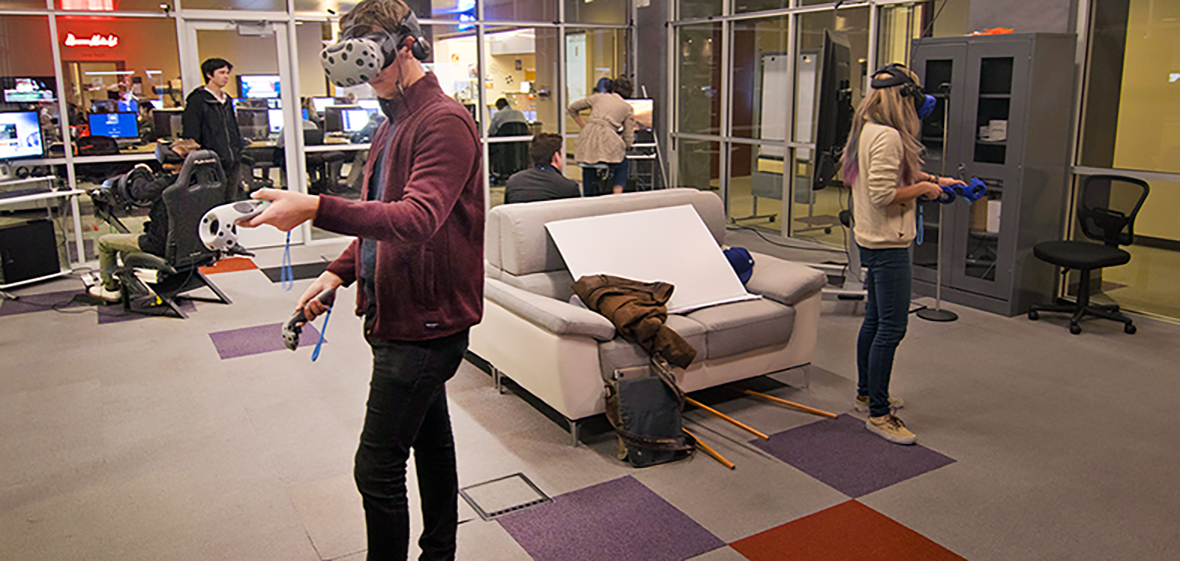Scientists are going below the surface to research underwater virtual reality as a means of astronaut training for the NASA Johnson Space Center.
University of Nevada, Reno professors, Paul MacNeilage, of the psychology department, and Eelke Folmer, of the computer science and engineering department, originally pitched to the Office of Naval Research, then redirected their focus and found funding through a NASA EPSCoR grant of $30,000.
"NASA was excited at the possibility of simulating being in space by conducting VR training underwater," Folmer said. "What we're doing with it right now is hoping to get some pilot data and a proof of concept, because ultimately it could be much more cost effective for NASA, and it would allow them to have many different training scenarios ready on hand."

Both MacNeilage and Folmer have developed the software necessary to simulate being outside the Space Station or a space shuttle, and earlier this year they conducted a virtual realty workshop where that software was tested, allowing people to go on a space walk within a smartphone.
"Putting together that simulation was the easier part," Folmer said, "and we know that being underwater is the most readily available simulation of experiencing zero gravity, so now we're working on figuring out how to fit all of our software and hardware together to make a working experiment."
With the preliminary research underway, MacNeilage and Folmer are trying to find the right scuba gear that will allow them to implement the visual aspect of their VR simulation. At the moment, they've chosen a full-faced diving mask, which will allow the subject to communicate throughout test runs.
"The full-faced mask means there isn't a separate breathing regulator and the person in the experiment can talk to the person conducting the experiment," MacNeilage said. "That level of communication will be important because people will be underwater without being able to see the real environment, which just isn't a normal experience, so having that ability to talk like you're above water will hopefully help."
{{RelatedPrograms}}
Once the underwater experiments are ready to be held in the pool of the University's Lombardi building, the divers will move their virtual selves around using a joystick, which will control a virtual thruster jetpack, similar to what is used by astronauts when navigating outside the Space Station or a space shuttle.
"We've implemented tasks where, for example, someone has to go from point A to point B using the joystick," MacNeilage said. "Physically you'll be floating in-place under the water, but your visual will be updated with your head movements and how you're using the joystick."
A spark underwater
Much of what went into the initial concept of MacNeilage and Folmer's underwater virtual reality research came out of their understanding of the limitation surrounding navigation aspects of the virtual world.
"When Eelke and I started working on this project we were interested in locomotion and which kinds of locomotion would be easier or more difficult to implement in VR," MacNeilage said. "The classic starting point is walking. It would be ideal if you could just walk around the virtual world with a headset on, but you would obviously bump into things, so you're limited to the space of your room. The underwater VR grew out of the conversation of water being a medium where real locomotion and VR locomotion come closer together meaning you can do a better job simulating something that feels real in a way that's easier to do than just walking."

MacNeilage's involvement also stems from his own academic curiosity within the psychology department.
"I suspect there's going to be more visual capture, if you will, when floating underwater, because you don't have contact with any support surfaces the way you do in real life," MacNeilage said. "The force of gravity is a real anchor in our perception of spacial orientation. When you're underwater and you're neutrally buoyant, all those cues go away, therefore your reliance on vision should be increased and I wanted to test this idea through underwater VR."
Both MacNeilage and Folmer will be teaching a human-machine interaction in virtual reality course next semester where they hope to prominently feature this project in the class.
"Obviously, until we get actual astronauts to try it out, we won't know if this could be used as a real training exercise," Folmer said. "But the information we can collect now, and the information we may be able to get from our course in the spring, will only help ensure that we can progress enough to the point where astronauts are able to test it and give us the information we need to really solidify the hardware and software."












